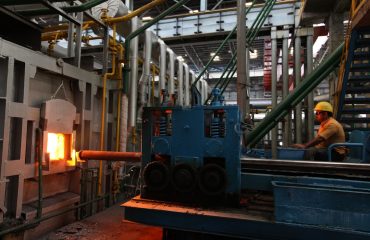High-pressure systems, while essential in numerous industries, present significant safety challenges. From oil and gas extraction to chemical processing and power generation, the potential for catastrophic failure is ever-present. Understanding and implementing robust safety measures is not just good practice; it’s a necessity for protecting personnel, equipment, and the environment. This comprehensive guide delves into the critical safety considerations for working with high-pressure systems.
1. Design Considerations for Enhanced Safety
The foundation of a safe high-pressure system lies in its design. Careful consideration of materials, components, and operating parameters is crucial. Using materials with high yield strength and corrosion resistance is paramount. Components like valves, pipes, and pressure vessels must be designed to withstand the maximum expected pressure and temperature with a significant safety factor. Finite element analysis (FEA) is frequently employed to simulate stress and strain under various operating conditions, identifying potential weak points before they become catastrophic failures. Proper selection of pressure relief devices, such as pressure relief valves (PRVs) and rupture discs, is critical to prevent over-pressurization. These devices must be sized appropriately and regularly inspected to ensure their functionality. Furthermore, the design should incorporate features that minimize the risk of human error, such as clear labeling, intuitive controls, and lockout/tagout procedures.
2. Operational Procedures: A Safety Net in Action
Even the best-designed system requires meticulous operational procedures to maintain safety. Before any operation, a thorough pre-start-up safety check (PSS) must be conducted. This includes verifying the integrity of all components, confirming pressure gauges are accurate, and ensuring all safety devices are functioning correctly. Operators must be fully trained and competent in the operation of the system, understanding the potential hazards and emergency procedures. Regular monitoring of pressure, temperature, and other critical parameters is essential to detect any deviations from normal operating conditions. Clear communication protocols should be in place to ensure effective coordination between operators and supervisors. Furthermore, standardized operating procedures (SOPs) should be documented and readily accessible, providing a consistent approach to system operation and reducing the likelihood of errors.
3. Maintenance and Inspection: Preventing Catastrophe
Regular maintenance and inspection are vital for the longevity and safety of high-pressure systems. A comprehensive preventative maintenance program should be implemented, including regular inspections of all components for signs of wear, corrosion, or damage. This may involve visual inspections, non-destructive testing (NDT) techniques such as ultrasonic testing or radiographic testing, and pressure testing to verify the integrity of the system. Maintenance activities should be performed according to a strict schedule, with detailed records kept to track all inspections and repairs. Proper documentation is crucial for demonstrating compliance with safety regulations and identifying potential trends that might indicate developing problems. The maintenance team must be properly trained and equipped to handle the specific challenges of maintaining high-pressure systems, working safely with potentially hazardous materials and equipment.
4. Emergency Procedures: Responding to High-Pressure Incidents
Despite the best efforts in design, operation, and maintenance, accidents can still occur. Therefore, having well-defined emergency procedures is crucial. These procedures should cover a range of potential scenarios, including equipment failure, leaks, and fires. Emergency response teams should be trained in the proper use of emergency shutdown systems, personal protective equipment (PPE), and emergency response techniques. Emergency shut-down systems should be regularly tested to ensure their functionality and responsiveness. Clear evacuation routes and assembly points should be designated and communicated to all personnel. Emergency response plans should also consider the environmental impact of a potential incident, outlining procedures for containing and mitigating any release of hazardous materials.
5. Regulatory Compliance and Risk Assessment: A Proactive Approach
Operating high-pressure systems necessitates strict adherence to relevant safety regulations and standards. These regulations vary depending on the location and industry, but generally cover aspects such as design, operation, maintenance, and emergency procedures. Regular audits and inspections by regulatory bodies ensure compliance. Furthermore, conducting thorough risk assessments is crucial for identifying potential hazards and implementing appropriate control measures. This involves identifying potential failure modes, assessing their likelihood and severity, and implementing measures to mitigate the risks. A robust safety management system (SMS) should be implemented to integrate all aspects of safety management, including risk assessment, training, emergency procedures, and regulatory compliance. Continuously reviewing and updating the SMS based on lessons learned and technological advancements is essential to maintaining a high level of safety.
Operating high-pressure systems demands a rigorous commitment to safety. By integrating these key considerations into every stage – from design to emergency response – we can significantly reduce the risk of accidents and protect both personnel and the environment.
SEO Tags:
High-pressure safety, pressure vessel safety, process safety management, industrial safety, high-pressure system design




